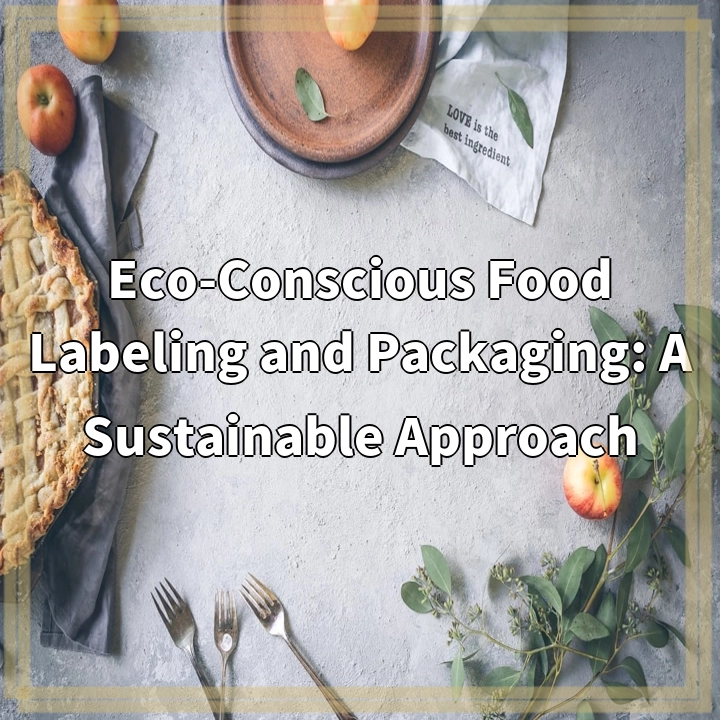
What is Eco-Conscious Food Labeling and Packaging: A Sustainable Approach?
Eco-conscious food labeling and packaging refers to the use of sustainable and environmentally-friendly practices when it comes to labeling and packaging food products. It involves considering the entire lifecycle of a product and taking into account its social, economic, and environmental impact. This approach aims to minimize the use of resources, reduce waste, and promote transparency in the food industry.
Real-World Problems Associated with Eco-Conscious Food Labeling and Packaging
While eco-conscious food labeling and packaging is a step towards a more sustainable future, there are several challenges and issues that need to be addressed:
1. Lack of Clear Standards and Regulations
One of the major hurdles is the absence of clear and standardized guidelines for eco-conscious food labeling and packaging. This makes it difficult for consumers to make informed choices and for companies to adopt sustainable practices consistently. There is a need for industry-wide transparency and collaboration to establish clear standards and regulations.
2. Greenwashing and Misleading Claims
Greenwashing, which refers to the misleading or exaggerated claims of sustainability, is a prevalent issue in the food industry. Companies may use eco-friendly buzzwords or symbols without truly implementing sustainable practices. This can create confusion among consumers and undermine the credibility of genuine eco-conscious efforts.
3. Balancing Cost and Affordability
Implementing sustainable packaging and labeling practices often comes at a higher cost. Small-scale producers and businesses may find it challenging to invest in eco-friendly materials and processes due to limited financial resources. Striking a balance between affordability and sustainability is essential to ensure the widespread adoption of eco-conscious practices.
4. Recycling and Waste Management
Many food packages and labels are not designed with recyclability in mind or may be made of materials that are difficult to recycle. This poses a challenge for waste management and the circular economy. Enhancing recycling infrastructure and promoting innovative packaging solutions are crucial to address this issue.
5. Consumer Education and Behavior Change
Educating consumers about the importance of eco-conscious food labeling and packaging is essential for driving change. However, consumer behavior and preferences can be resistant to change. Raising awareness, providing accessible information, and encouraging responsible choices are necessary to create a demand for sustainable products and packaging.
By addressing these real-world problems and working towards solutions, the food industry can pave the way for a more sustainable and eco-conscious approach to labeling and packaging.

Solutions to Real-World Problems of Eco-Conscious Food Labeling and Packaging
Addressing the challenges associated with eco-conscious food labeling and packaging requires collaborative efforts from various stakeholders. Here are some potential solutions:
1. Establishing Clear Standards and Regulations
To promote transparency and consistency, it is necessary to develop industry-wide standards and regulations for eco-conscious food labeling and packaging. This will provide a framework for companies to follow and enable consumers to make informed choices.
2. Combating Greenwashing
Efforts must be made to tackle greenwashing by encouraging third-party certifications and independent verification of sustainability claims. This can help build trust and ensure that only genuinely eco-conscious products and packaging receive recognition.
3. Promoting Financial Support and Incentives
Financial support and incentives, such as grants or tax breaks, can be provided to small-scale producers and businesses to make eco-conscious packaging and labeling more financially viable. This will encourage wider adoption and reduce the barriers to entry.
4. Investing in Innovation and Research
Investing in research and development can lead to the discovery of new, sustainable materials and technologies for food packaging and labeling. Collaboration between industries, universities, and research institutions can drive innovation and help find solutions to recycling and waste management challenges.
5. Enhancing Consumer Education and Engagement
Raising awareness through educational campaigns and providing clear information to consumers about the environmental impact of packaging and labeling choices is vital. Consumer education can empower individuals to make sustainable choices and contribute to collective behavior change.
6. Collaboration and Knowledge Sharing
Encouraging collaboration between different industry stakeholders, including manufacturers, retailers, policymakers, and environmental organizations, can help foster innovation, share best practices, and create a collective impact in sustainable food labeling and packaging.
By implementing these solutions, the food industry can make significant progress toward a more sustainable and eco-conscious approach to food labeling and packaging, benefiting both the environment and consumers.















